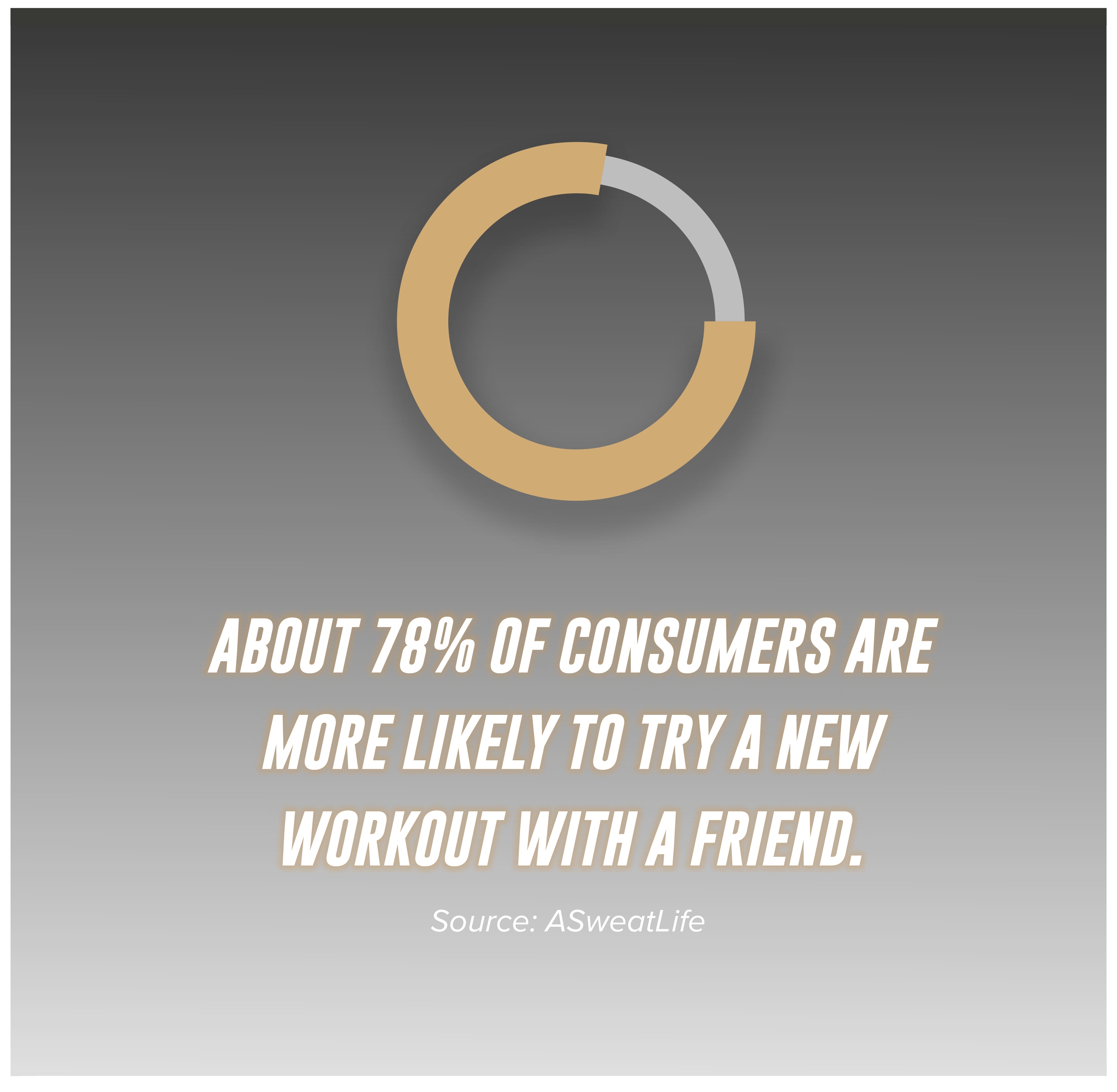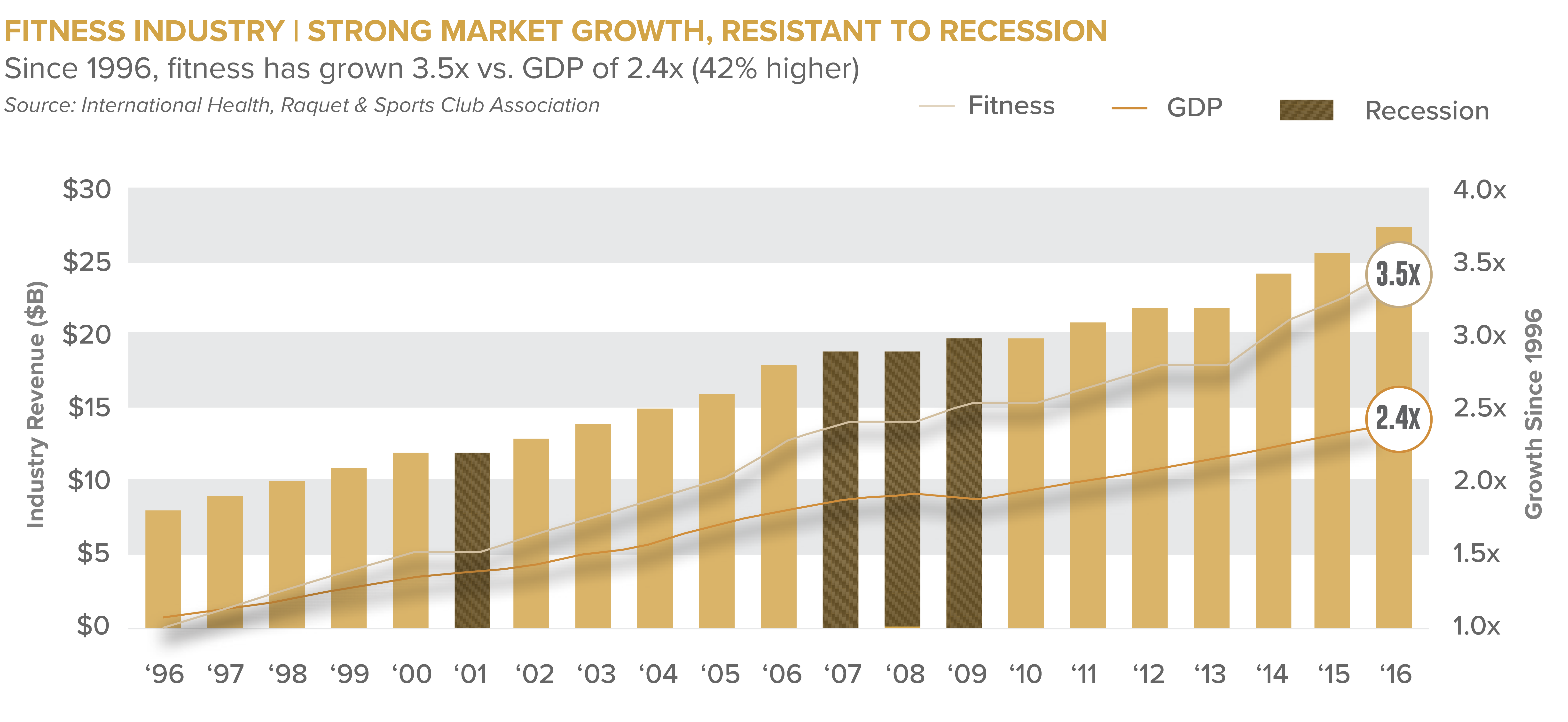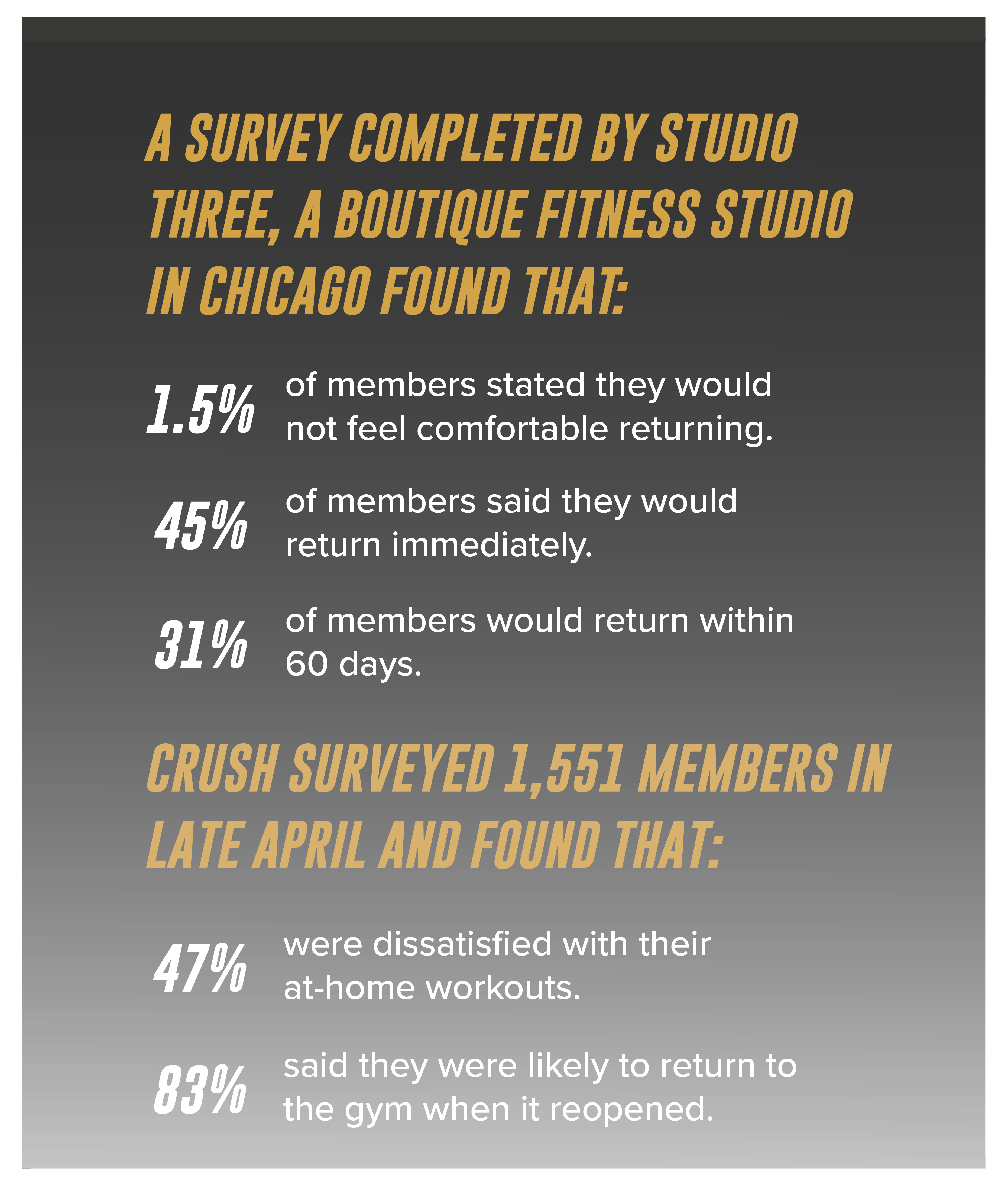CLICK HERE TO DOWNLOAD THE ARTICLE
There are more fitness options in the market now than ever before. People can exercise at big-box gyms, sports clubs, smaller boutique fitness studios, as well as through on-demand at-home fitness equipment and even virtual platforms. Although the COVID-19 pandemic has brought on a slew of challenges to the industry, the rise of boutique fitness studios looks to continue through 2021 and beyond. They are well-positioned to serve the millennial customer, offering personalized training, and immersive fitness experiences. With intense competition in the market, key players are trying to distinguish their service offerings by providing a unique value proposition, especially in a COVID-19 world. In this article, Matthews™ explores the expansion of the boutique fitness market and what to expect from the industry moving forward.
Why Boutique Fitness?
The increasing awareness and desire for consumers to maintain and improve their health and fitness has encouraged people from all walks of life to adopt fitness as an essential part of their lifestyle. This increased focus on health and wellness from customers has spurred the demand for services that provide positive returns. In particular, boutique fitness is expanding beyond the traditional norms of the fitness space to incorporate various features that make them more attractive and compelling to consumers than big-box gyms. Boutique gyms typically specialize in a niche category of fitness (pilates, yoga, barre, boxing, etc.) and focus on skill-building and educating members on the nuances of technique and form. In addition, boutique gyms place a great deal of importance on community-building and creating a social atmosphere where members become a tight-knit community or family. The members’ shared interests, combined with the instructors’ personalized attention, create a powerful communal experience that keeps members returning to the studio. For boutique fitness studios, classes can cost upward of $30 per session, almost twice as much a month as big-box gyms.
So, what is it about these studios that make people willing to pay this much for a class?
Boutique fitness focuses on specialization and experience, often leasing a smaller space in the 1,500 to 3,000 square foot range, compared to 15,000 to 65,000 square feet for big-box studios. This allows trainers and instructors to deliver the best fitness experience in their specialty. They provide professional-level skills and expertise to members. For example, the instructors teach proper form and technique, which is not something big-box gyms offer. Boutique fitness brands can be found in almost every neighborhood – a core motive of why people move to these surroundings. They have a very tight-knit community, with members rooted in a commitment to personal fitness, drawing strength and inspiration from each other. Essentially, the rise of health and wellness has shifted consumer preferences, causing people to gravitate towards boutique fitness gyms.

Concerns Regarding Oversaturation
Many investors and owners are concerned with the market becoming saturated with options after a decade of intense growth and constant shifting trends. It’s become more important than ever to understand who the clients are, where they live, and what their fitness needs truly are. With so many boutique fitness studios in the market, it is predicted that there may be some COVID-19 related fallout. This might push out older, tried brands and studios that were already struggling, allowing the new wave of boutique fitness gyms to build their brand and gain market share.
Concerns Regarding Fickle Customers
Fickle customers will try something out a few times before moving on to the next big thing. This can make it hard for studios to convert guests into long-term, steady members, especially when they don’t have monthly or annual gym membership fees to keep them loyal. However, in a post-COVID-19 world, it is predicted that these customers will see fitness studios as more than just a workout; they will crave the connection and community associated with various boutique fitness brands.


The Trajectory of the Health & Wellness Market
- 2015: Boutique fitness studios accounted for 21% ($22.4 billion) of the entire fitness club market. (Source: IHRSA)
- 2016: More than 36,000 fitness club locations and 57 million memberships. Revenue was up to $27 billion, almost 450%. (Source: Toptal)
- 2017: Boutique fitness brands made up 40% of the market, up 121% in four years compared with 18% growth for big-box gyms. (Source: IHRSA)
- 2018: Approximately 71.5 million consumers used 40,000 for-profit health clubs. About 42% of all gym memberships came from boutique fitness studios, the highest membership record in history. Global revenue amounted to $94 billion, an 8.7% increase. (Source: IHRSA & Club Intel)
- 2019: Global revenue amounted to $96.7 billion, a 2.9% increase. (Source: IHRSA)
- 2020 (estimated before COVID-19): Global revenue should reach $99.5 billion. (Source: Wellness Creative Co)
- 2021 (estimated before COVID-19): Global revenue should reach $102 billion. (Source: Wellness Creative Co)

The Hurdle – COVID-19
Given the trajectory of these numbers, many are questioning if the trends we have seen in recent years will continue post-COVID-19. There are macro signals that this growth will indeed persist for boutique fitness studios; however, despite health clubs trying their best to transition away from a location-based business and into the online world, it is estimated that the health club sector could lose around $10 billion annually, according to Harrison Co. According to IHRSA, the U.S. fitness industry lost $700 million a week during the peak of closures. COVID-19 has presented the opportunity for boutique fitness to pivot and pave the way for the future. Innovation is at the core of boutique fitness.
Many boutique fitness studios went digital during the initial lockdown, offering virtual classes to its members. This strategy proved successful for many, as businesses were able to build their community base. It is predicted that people will be more interested in the community aspect of boutique fitness once life returns to a normal routine.
As the public currently stands, many have reduced confidence in enclosed spaces and indoors, where people are near others. However, when states reopened post-COVID-19, we saw many people rushing back to fitness studios. Boutique fitness studios have modified their experiences to comply with all existing CDC and state guidelines, which has proven to be a monumental task. Not only have they changed basic interpersonal behavior, but also physical alterations that needed to be made to the interiors.
Additionally, the square footage of boutique fitness allows for scalability. It is easier and more efficient to scale a business with a smaller footprint and tailor the changes to membership-based clients considering they are dealing with fewer members overall. Big-box gyms still have their place in the market, but scaling will be more challenging. For example, many boutique fitness studios have moved workouts to surrounding outdoor areas to comply with social distancing and health guidelines, which is something big-box gyms would have trouble maneuvering and setting-up.
It is important to note that access to fitness centers is key to keeping Americans healthy. Physical activity plays a vital role in maintaining a healthy immune system and reducing COVID-19 risk factors such as obesity, heart disease, lung disease, and diabetes. Physical fitness has long-term mental benefits as well, including reducing the risk of stress and depression, which increased nationally during COVID-19 lockdowns.

Why Boutique Fitness Studios Make Great Tenants
With the health and wellness trend continuing, people are more health-conscious than ever before, making fitness tenants a staple at every community shopping center. Per the analysis on the COVID-19 hurdle, we see boutique fitness studios come out on top. In fact, big-box tenant Gold’s Gym filed for bankruptcy in May 2020, and it is expected that more players in the big-box category will follow suit in the near future, paving the way for the growth of boutique fitness.
Consumers value having convenience, and an increasing number of fitness tenants are popping up at shopping centers as a result. When looking at the market, there are fewer freestanding gyms and stand-alone fitness studios. To capitalize on the existing customer base and foot traffic, fitness tenants move into shopping centers alongside grocery stores, offices, medical offices, and restaurants.
For shopping center owners, these businesses don’t have to take years of expensive construction to open up, considering they have smaller square footage. Furthermore, they bring people to the shopping center at all hours of the day and promote cross-tenant synergies that benefit the shopping center as a whole. Before and after a workout, consumers are more likely to grab a coffee and bite to eat, purchase groceries, or pick up their prescriptions from a neighboring business due to the convenience. Other tenants will appreciate having the spill-over business from these dedicated boutique fitness goers.
A Rising Star: Mayweather Boxing + Fitness
Developed by Floyd Mayweather, Mayweather Boxing + Fitness is a boutique fitness brand that focuses on a high-intensity fitness experience formulated with the combination of boxing, strength training, and cardio conditioning intervals. This boutique fitness brand not only survived having to close temporarily, but it also found ways to thrive and continue to serve its members. During COVID-19 lockdowns, Mayweather Boxing + Fitness introduced live streaming and digital programming, which kept all members fit and engaged in the short-term. This provided members who still craved the in-studio experience the ability to keep up with their engaged workouts and continue to be part of the community.
Mayweather Boxing + Fitness sold more memberships while they were temporarily closed than when they were open before the shutdowns. How? Franchise owners actively called prospects who were sitting at home and connected with them about what’s happening globally and how health and fitness are important, especially during a pandemic.
As a result of COVID-19, Mayweather Boxing + Fitness adjusted its services by limiting class sizes by 50 percent (varied by location), reducing access to shared equipment, maintaining six-feet between members, and introducing contactless check-ins. The brand also changed their floor plans to remove lobby walls, creating a more open and airy studio layout that features a lot more open space.
COVID-19 has introduced many challenges to the fitness world, but these challenges have presented new opportunities. Fitness brands have pivoted their offerings and become more innovative, which has delivered additional revenue streams. As new real estate opportunities open up, landlords will look for proven brands to sign leases, and boutique fitness fits the mold.
For more information regarding boutique fitness concepts or landlord/tenant opportunities, please contact a Matthews™ specialized agent.









